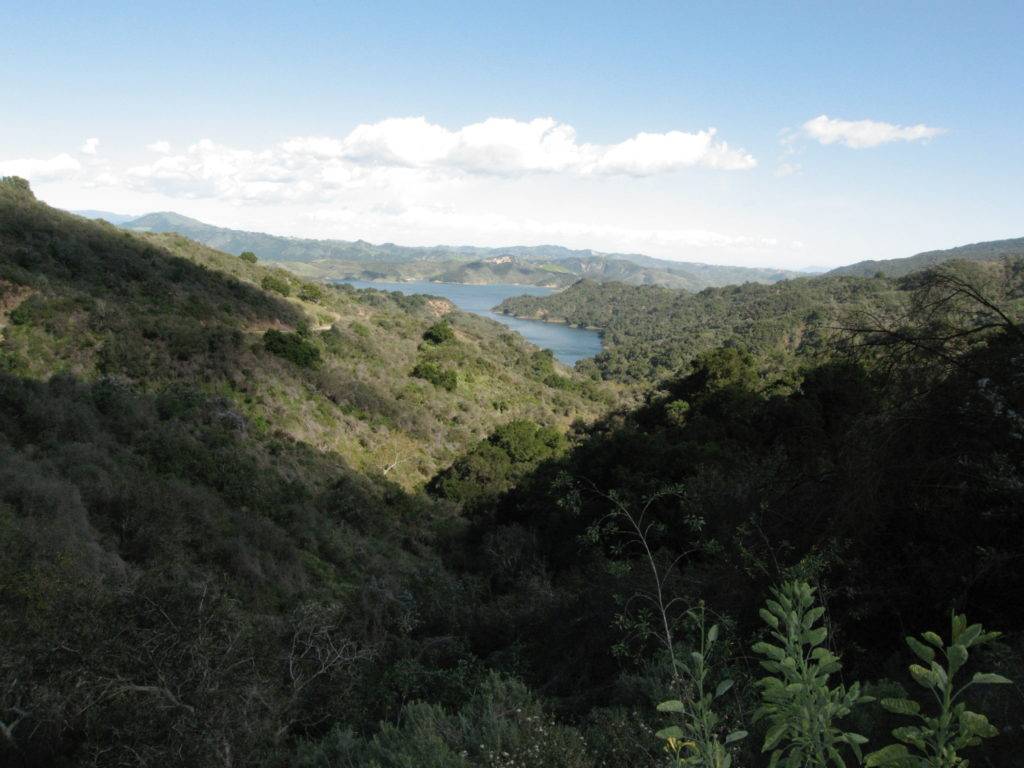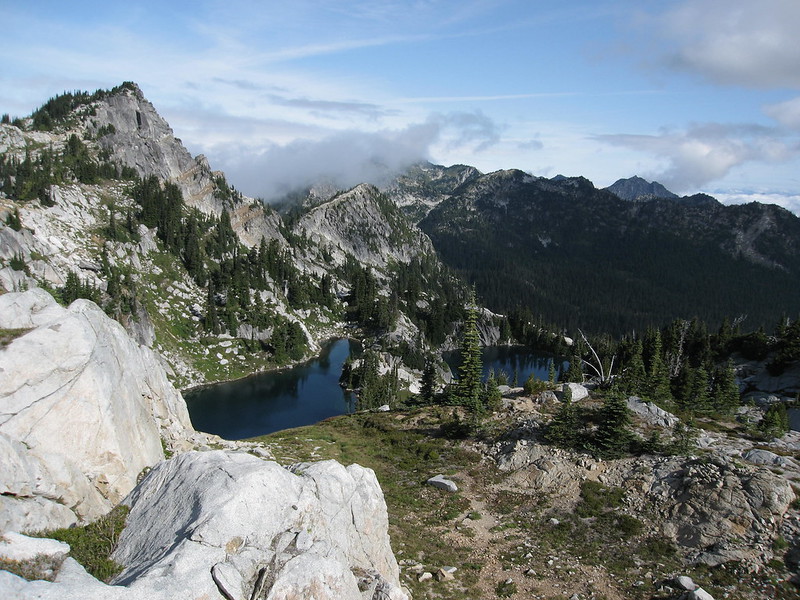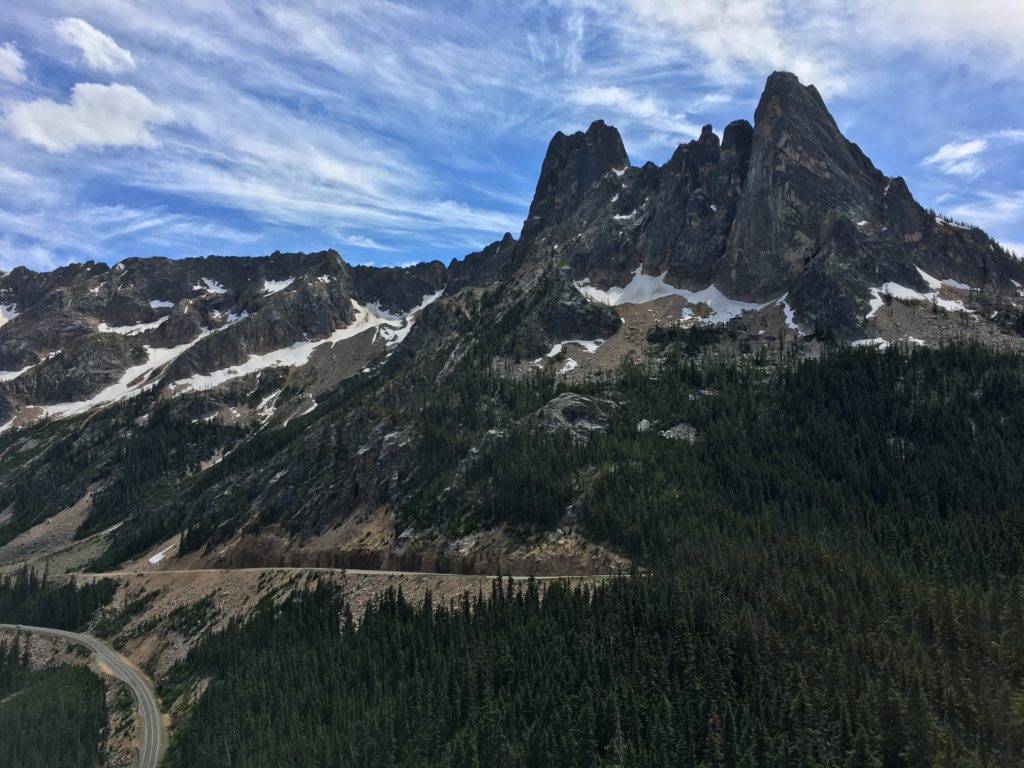Among the most popular fall hikes in the Cascades are those with abundant larch trees. The Maple Pass Loop near Rainy Pass on Highway 20 (aka “The North Cascades Highway”) offers a great mix of larches, views, meadows, and lakes.
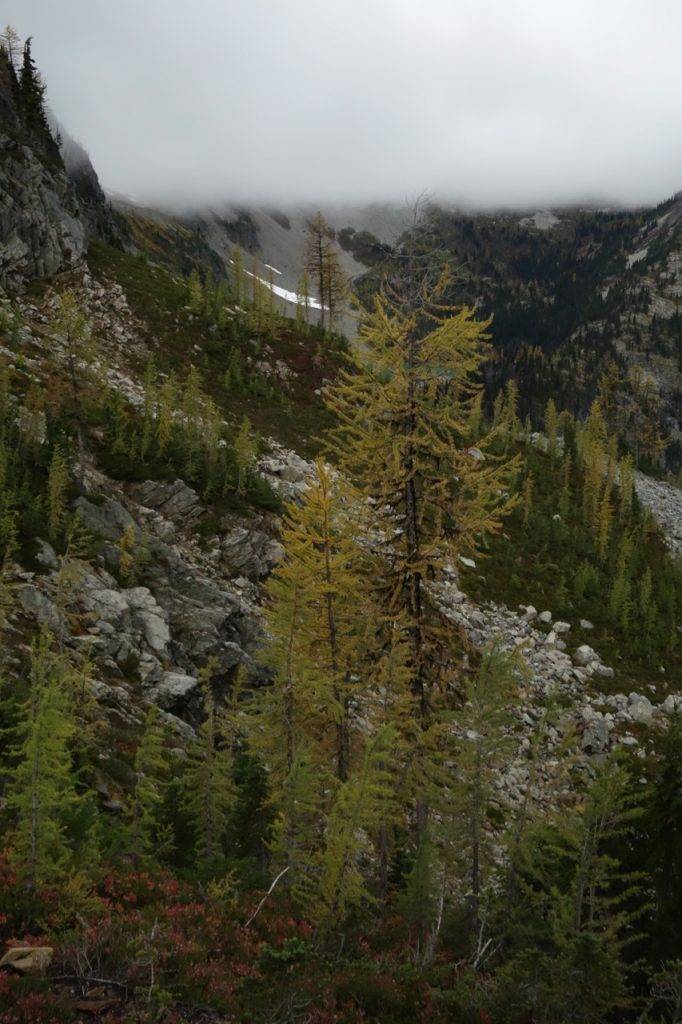
Larches are an unusual “deciduous conifer” whose needles change a spectacular golden color and completely fall off during the fall. They range along the eastern slopes of the Cascades as well as parts of the Rockies. During the spring and summer months you might not notice their uniqueness because they have needles like pines, firs, or hemlocks. But unlike those conifers that lose relatively few needles, larches drop all of their needles in the fall.
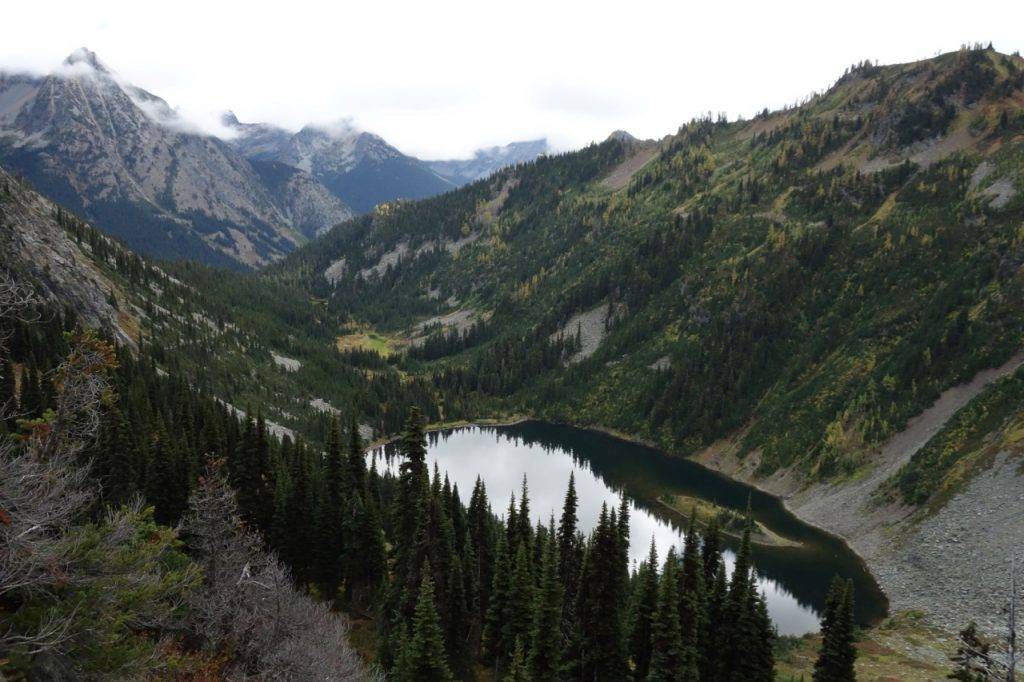
Two kinds of larches are Washington state natives: the western larch (Larix occidentalis) and subalpine larch (Larix lyallii).
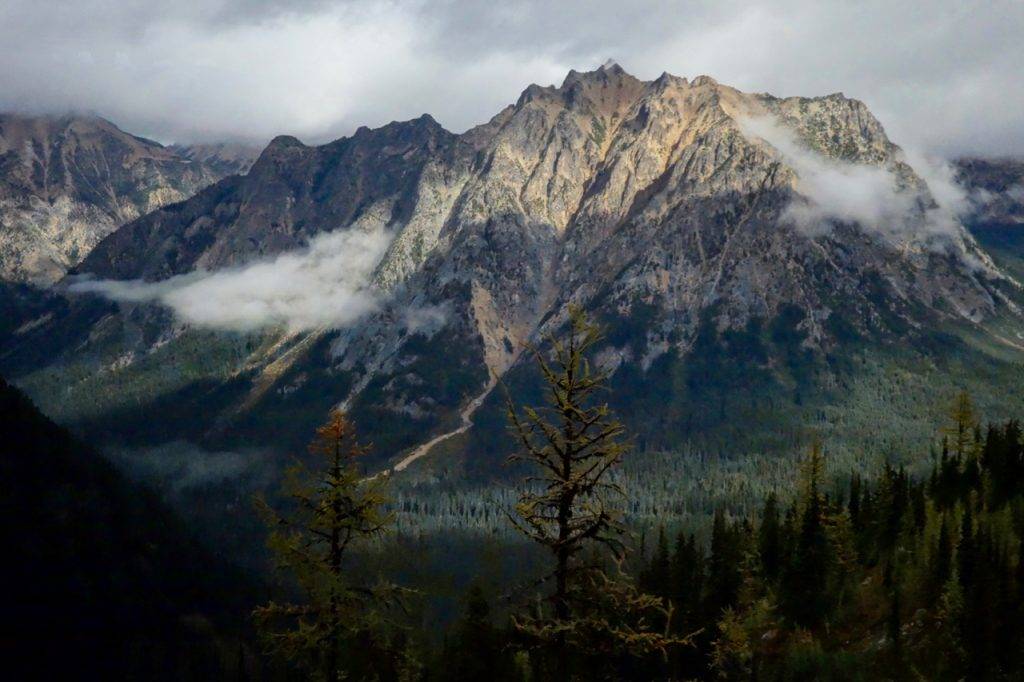
Western larches have a triangular shape with a narrow crown and grow up to 170 feet high on north-facing slopes between 2,000 and 5,500 feet in elevation. Their range stretches from Oregon to British Columbia and east through Idaho into northwestern Montana.
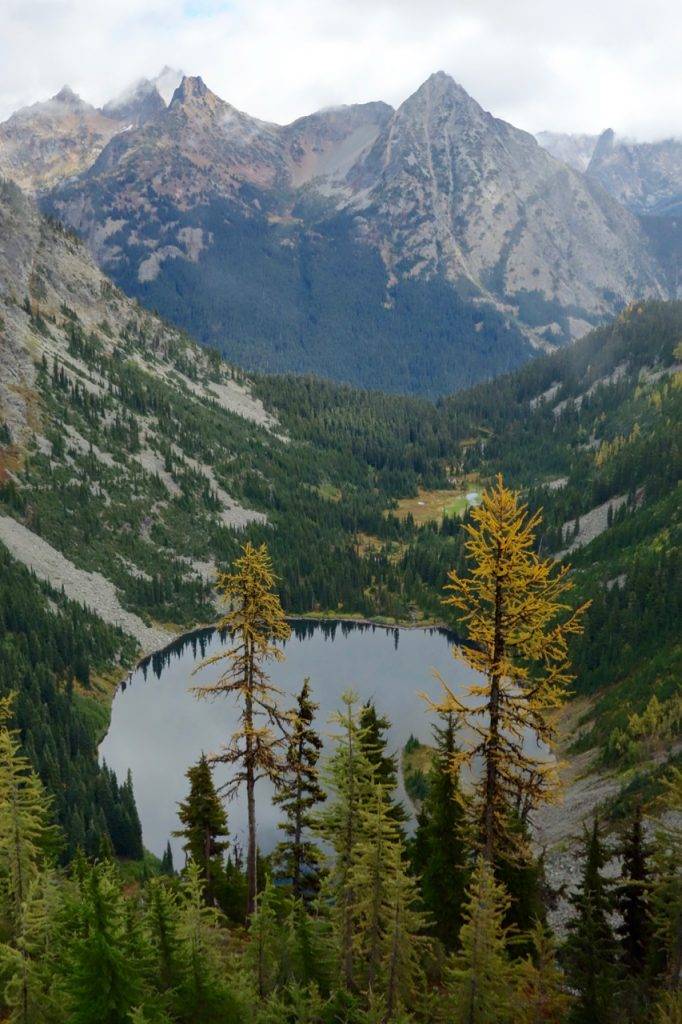
Subalpine larches tend to have branches spreading out in different directions. They grow up to 70 feet high, typically in cold, snowy locations on bedrock or talus outcropping between 5,800 and 7,500 feet. Their range extends north from the Wenatchee Mountains to British Columbia and Alberta, and east to northern Idaho and western Montana.
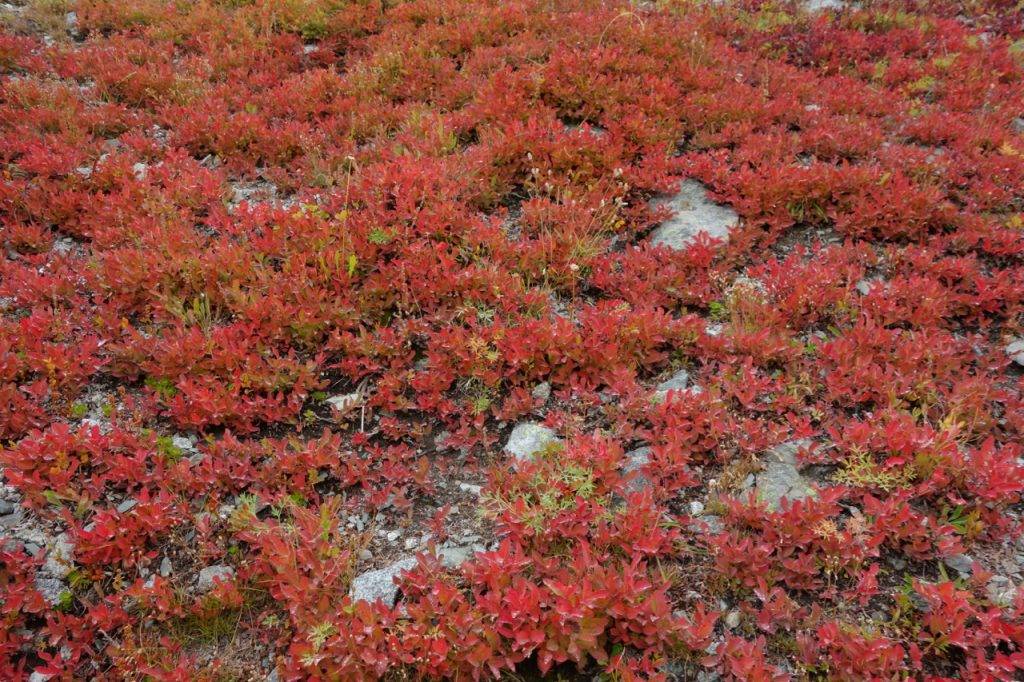
In Washington state, both species grow on the sunny, eastern slopes of the Cascades, although western larch can be found a bit west of the Cascade Crest.
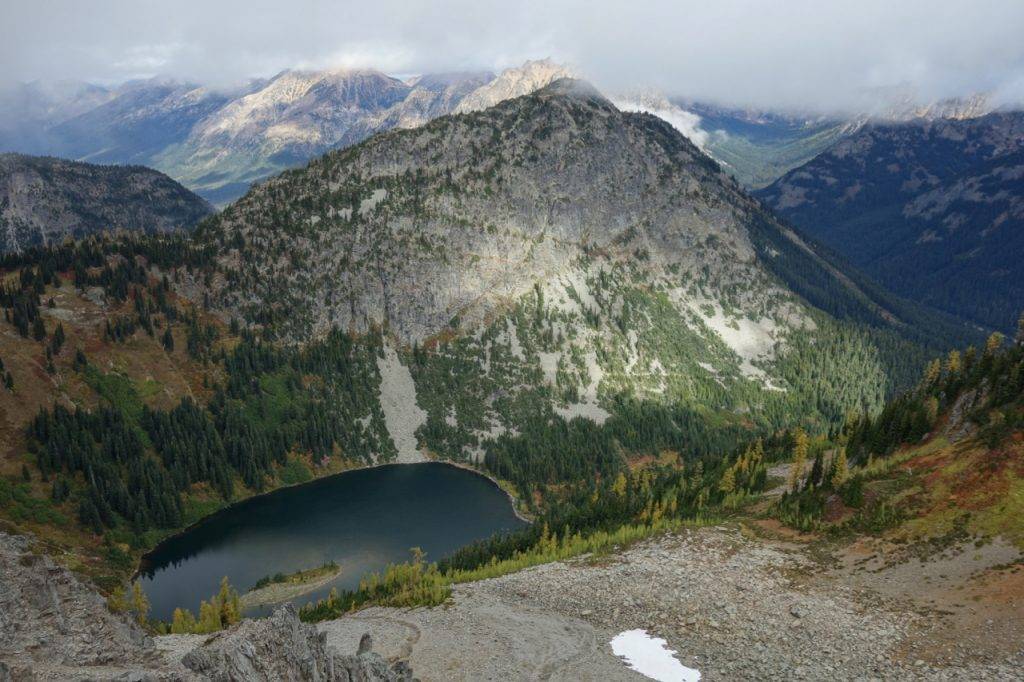
Depending on location, the best larch viewing is usually during the first two weeks in October.
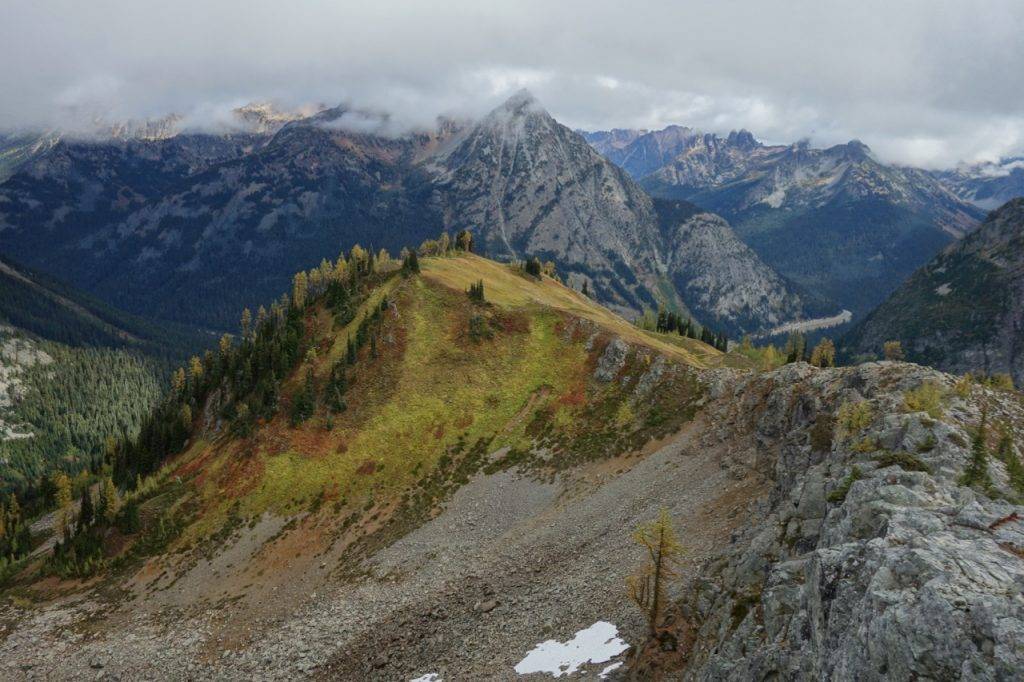
It’s about a 3-hour drive from Seattle to Rainy Pass, so you might want to plan an entire weekend around larch hikes: Get lodging in Mazama or Winthrop and consider hikes to Cutthroat Pass or Blue Lake.
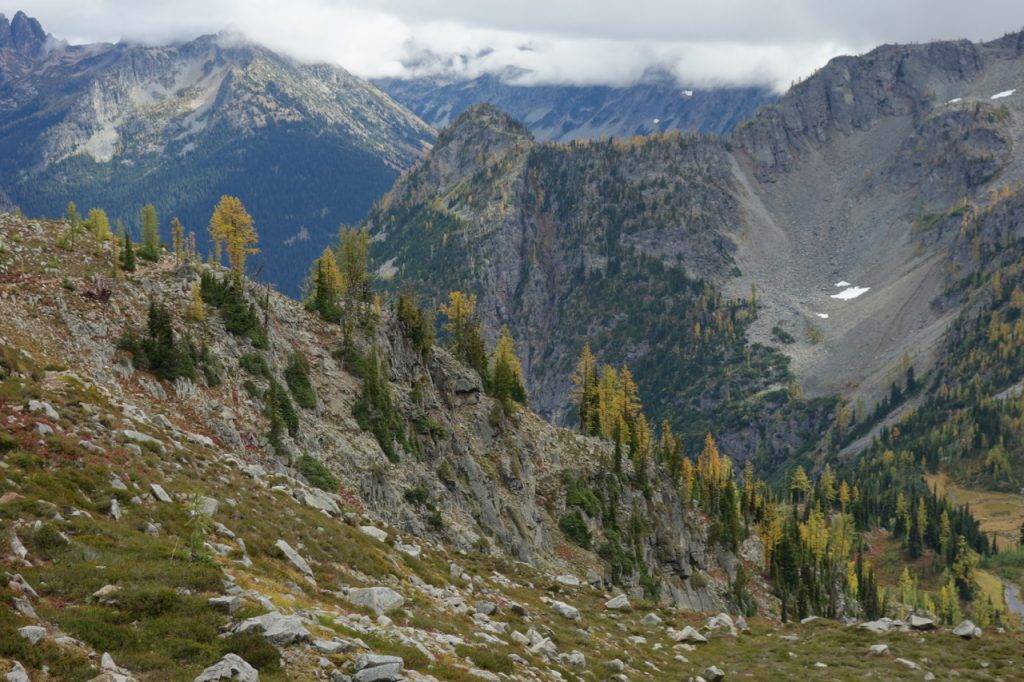
Check out the Washington Trails Association website for other larch season hikes.
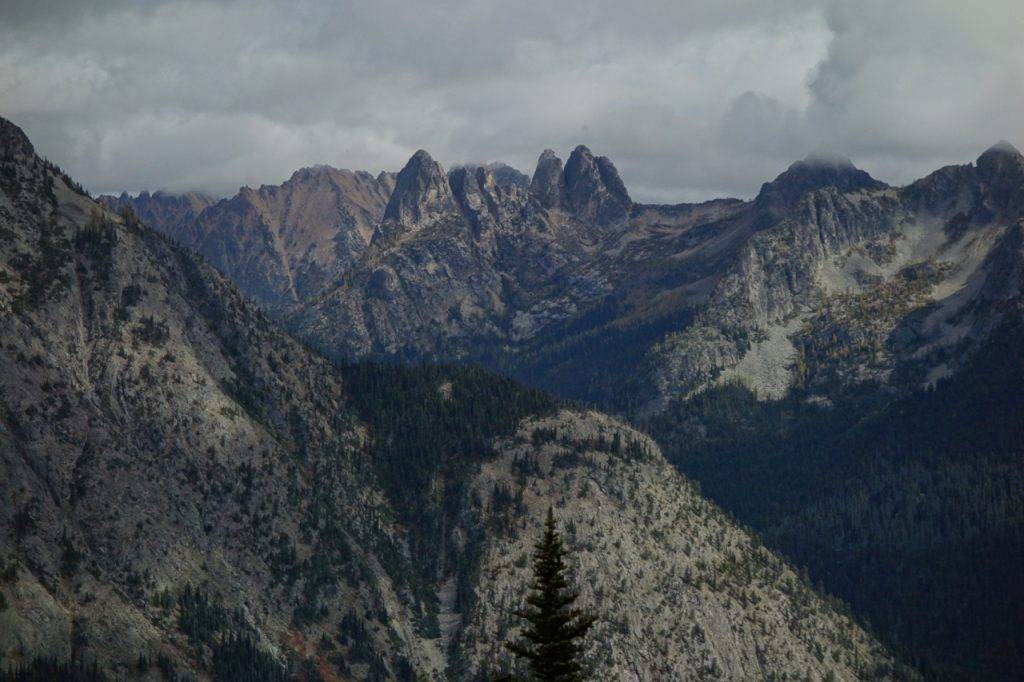
Pro tip: If you are reading about a larch hike on a website like this…expect crowded trails on weekends through the end of October.
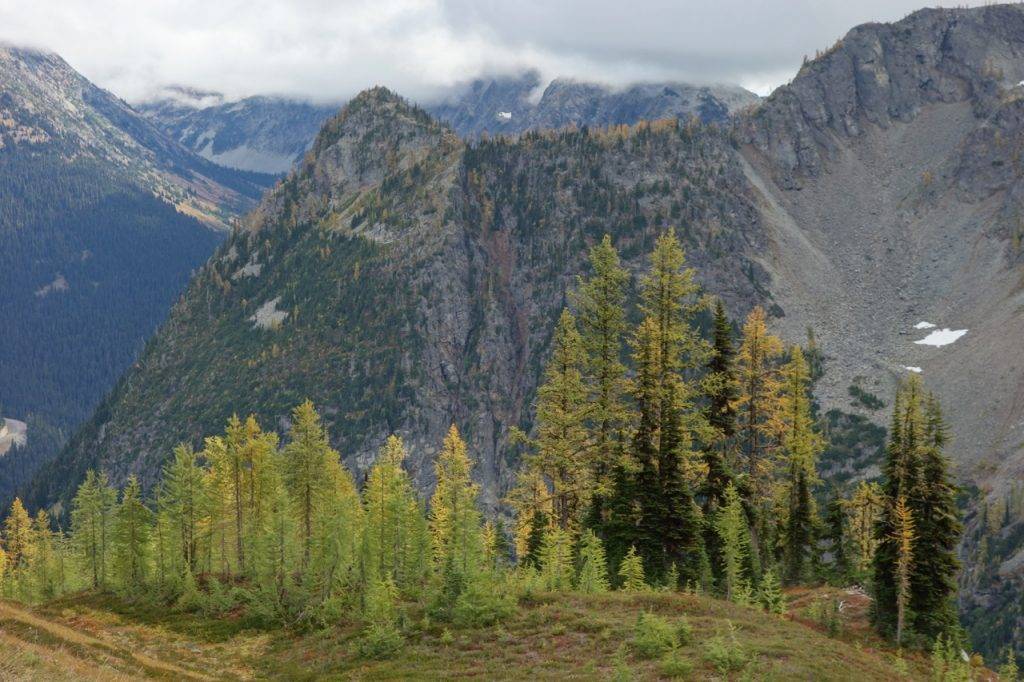
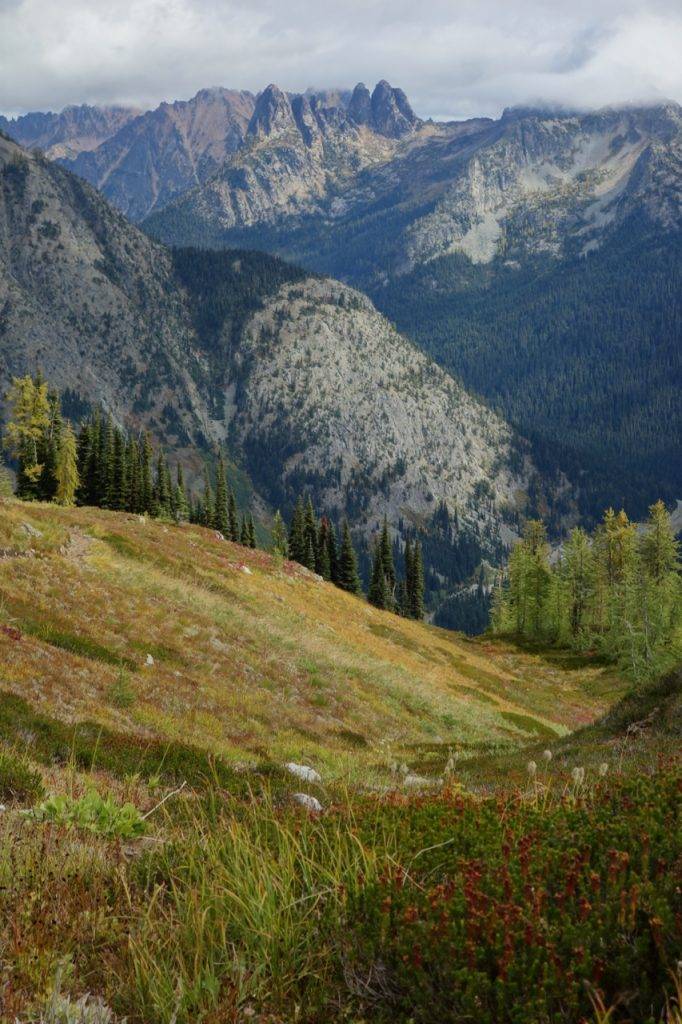
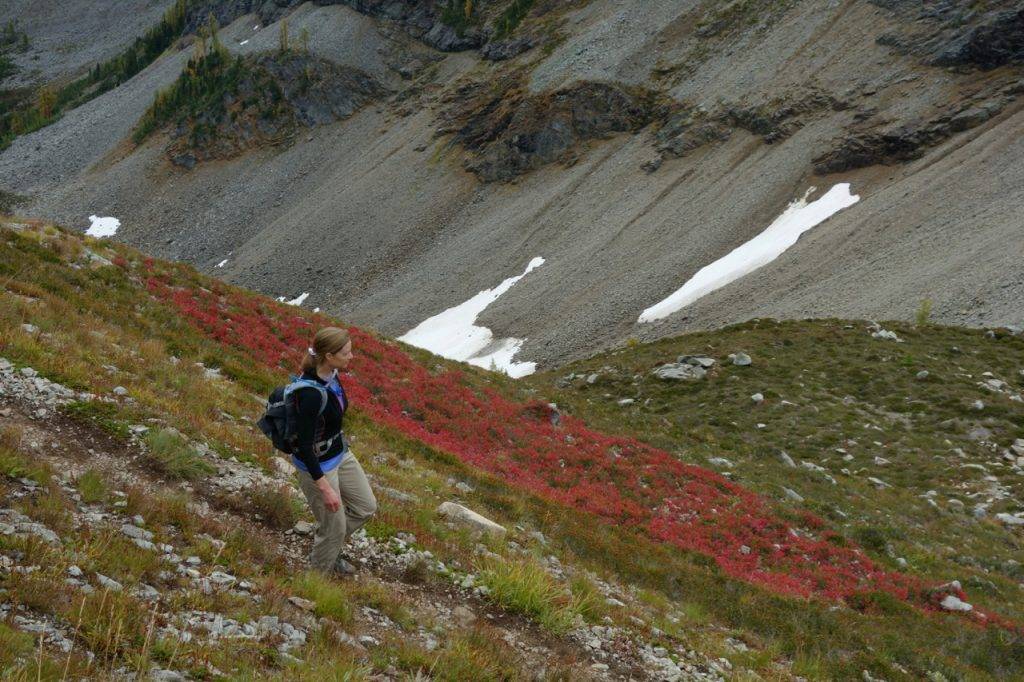
Regardless of the time of year, practice “leave no trace” when traveling in the backcountry.
